China’s military introduced reforms to the operations of the People’s Liberation Army (PLA) following the “most comprehensive restructuring of forces in its history” with the aim of improving its ability to conduct joint operations in an effective manner. Its most recent Defence White Paper 2019 (henceforth referred to simply as the White Paper) highlighted the perennial requirement of maintaining combat readiness, besides emphasising the need ‘to improve the capabilities of joint operations command to exercise reliable and efficient command over emergency responses, and to effectively accomplish urgent, tough and dangerous tasks’. According to the White Paper, the PLA Ground Force (PLAGF), since 2012, has conducted extensive mission-oriented training including 80 joint exercises at and above the brigade/division level. This is to modernise and prepare the PLA to compete with the United States (US) military. The PLA’s reforms and modernisation have seen major changes taking place- not only in its organization but also in its inventory and way of fighting. One of the key areas of the said modernisation is the domain of air defence (AD).
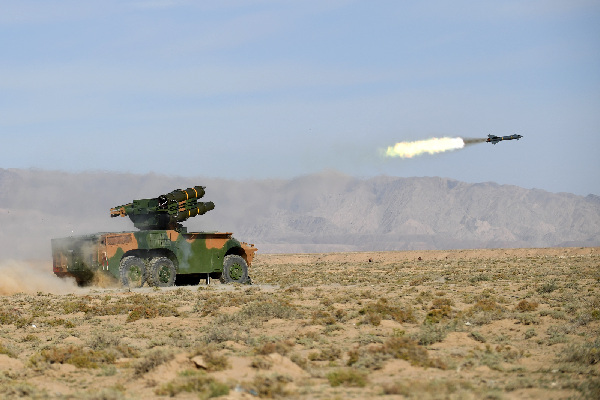
Organisationally, the new Western Theatre Command (WTC), which is of relevance to India, comprises more than half the territory currently under Beijing’s control with a focus on Xinjiang and Tibet and incorporates the erstwhile Chengdu and Lanzhou Military Regions. The other notable features of the reorganisation is the placing of the Tibet Military District (TMD) directly under the responsibility of the PLA and the establishment of the PLA Strategic Support Force (PLASSF) to conduct electronic, cyber warfare and psychological operations, and the Joint Logistics Support Force. The China Advanced Info-Optical Network (CAINONET) project which connects the Tibetan Autonomous Region (TAR) with China Proper through a widespread optical fibre cable network and Very Small Aperture Terminal (VSAT) satellite stations plays an important role in establishing an effective PLA command and control (C2) network in the region.
PLAGF Air Defence Forces in Tibet- the Background
In October 2010, China’s PLAGF carried out its first air-ground live ammunition exercise in Tibet. According to the reports published in the official Chinese Media, troops of air force, armour, artillery and electronic warfare divisions participated in the exercise. The photographs of the exercise show that the Chinese made Fēi Nú-6 (FN-6), the Flying Crossbow-6 Surface to Air Missile (SAM) was tested during the exercise. However, no details are available to confirm if any other AD weapon participated in the exercise or not, or if the FN-6 units which participated in the exercise were integral to the then TMD or not.
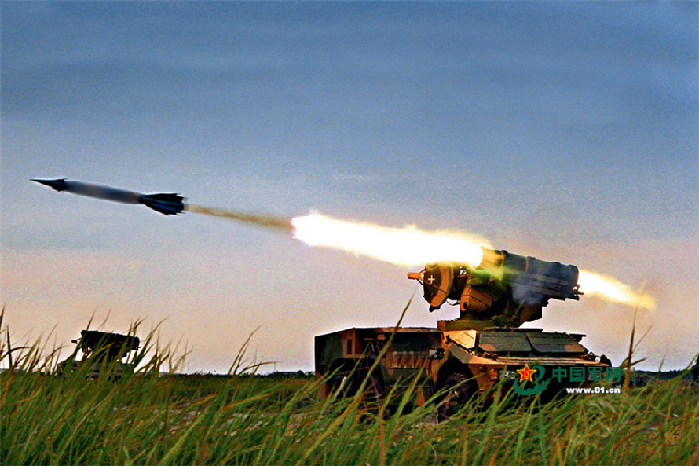
The PLAGF formations under TMD at that time were three Brigades with a signals regiment and support elements. The identity of the anti-aircraft (AA) unit in the TMD, if any, was not known and it is more than likely that the AA Regiment participating in the exercise was not a part of the TMD. Two years later, in July 2012, the PLAGF said that it had carried out live test firing of a new SAM system, later identified as the HQ-16 which had been operationalized by the PLAGF only the previous year, i.e. 2011. The test-firing was conducted by Lanzhou Military Region in an area opposite Ladakh and involved at least three separate launches against simulated enemy targets in a ‘South East’ direction. Though ostensibly meant to send a message to the increasing US presence in Asia, the location of the tests made it clear that the message was equally targeted towards India.

The HQ-16 SAM units participating in the exercise, were tasked with gathering technical information about the missile’s performance at high altitude areas and the attendant logistical issues for it was the first time that this system was being trialled at an altitude of 5000 meters (16,400 feet).
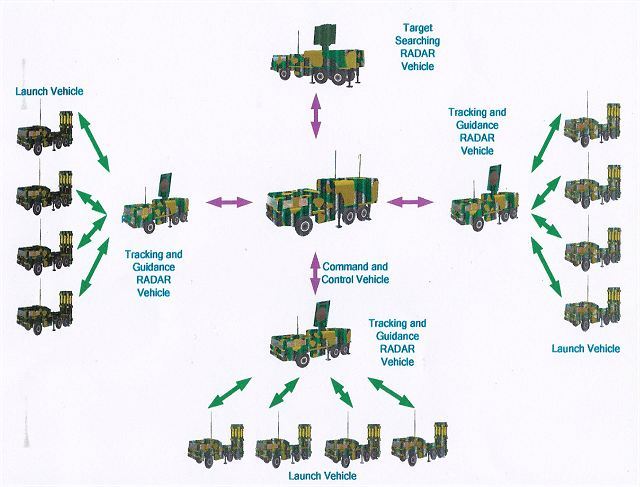
It was in May 2014 that the PLAGF carried out an ‘anti-air’ drill in Tibet in which the HQ-16 SAM was once again the centre of attention. Unlike 2012, when only a few test-firings were carried out by the missile system, this time around the exercise included a deployment exercise as well as live firing. As the identity of the participating unit was not revealed by the PLAGF, it was debatable whether the deployment exercise was merely a ‘proof of concept’ or a permanent deployment. Clarity came a couple of months later, when it was revealed that the missile unit was a part of the 651st Independent AD Brigade. This served as confirmation that the HQ-16 unit was indeed part of a formation integral to the TMD although details about the 651st itself remained unclear.
The only known PLAGF AD unit, with the same numeral designation, was the 651st Anti-Aircraft Artillery (AAA) Regiment and till then was known to have been equipped with AA guns only. If one was to consider that the Regiment had by now been re-designated as a Brigade and at least one missile unit (equipped with HQ 16) was part of it, it was fair to assume that 651 AAA Regiment, like other PLAGF Regiments, had undergone reorganization and had been converted into a Brigade.
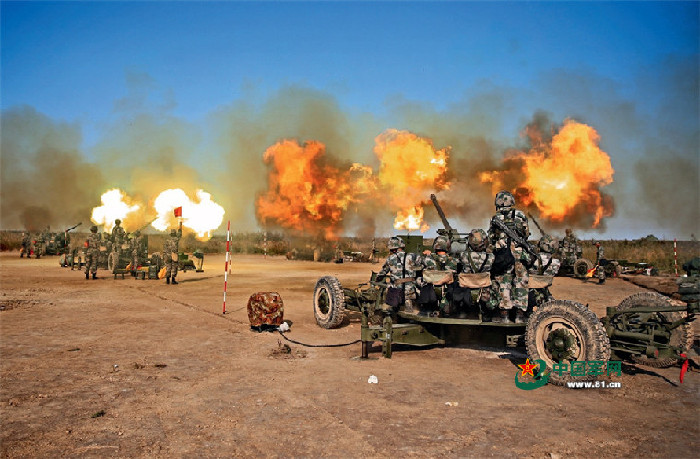
During the 2017 Doklam Standoff, the PLA carried out large scale military drills in TAR. PLA press releases during the time talked of “two exercises” and that one of these exercises involved “scenarios such as rapid deployment, multi-unit joint strike and anti-aircraft defence”. The videos and photographs leaked online revealed that the PLAGF had moved HQ-16 and HQ-17 SAM units by rail to TAR, during the standoff. As is the usual practice, no details of the AD units were revealed by PLAGF at the time. The China Daily did mention that a live-fire assault exercise on the Qinghai-Tibet Plateau, conducted by a ground combat brigade of the PLA Tibet Regional Command carried out the exercise involving rapid deployment, multi-unit joint strike and anti-aircraft defence wherein the AD units used twin-barrel anti-aircraft guns to bring down aerial targets.
It was much later in 2018, that the details of the 651st Independent AD Brigade came to be known. The Brigade was reportedly the good old 651st Anti-Aircraft Artillery Regiment only which had been reorganized and enlarged in 2012 with the HQ 16 SAM unit joining its order of battle. The other AD systems held by the Brigade included PG59 (57mm AAA) guns, PG99 (35mm AAA) guns as also the HQ-7A SAM, the HQ-16 and the NH-6 MANPADS. Going by standard organisational practice, it was assessed that the 651st had a unit each of the HQ-16 and the HQ-7A while the guns systems and the NH-6( probably the FN-6 ?) equipped at least two units, making a total of four distinct units in the Brigade.
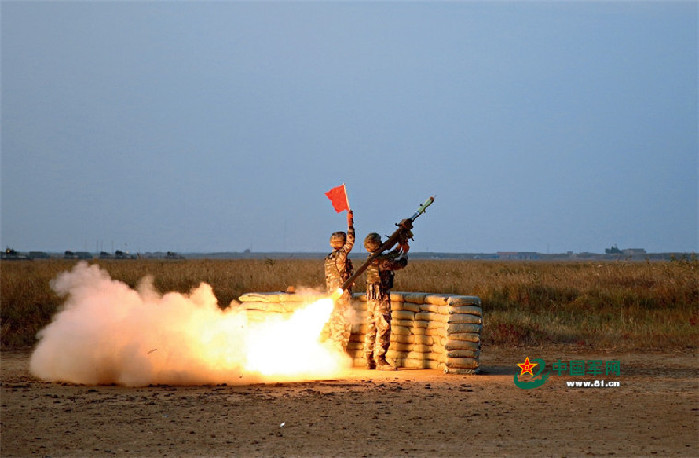
Present PLAGF Air Defence Setup
We do have a clearer picture of the PLAGF’s overall order of battle in the WTC. Post-reorganization each PLAGF group army (GA) consists of six combined arms brigades and six supporting brigades. The supporting brigades include one AD brigade. The WTC, of which Tibet is a part, at the moment has the 76th and 77th GAs and thus two AD Brigades (i.e. one with each GA) under it. These two AD Brigades are the 76th and 77th Air Defence Brigades. The 651st Independent AD Brigade remains as part of TMD. Within the combined arms brigades there are four combined arms battalions, a reconnaissance battalion, an artillery battalion, an AD battalion, an engineer and chemical defense battalion, a communications battalion, a combat or service support battalion, and a guard and service company. The AD battalion is typically equipped with self-propelled AA guns systems. Further down, the combined arms battalion, which is now the basic deployable unit, also has integral air defence elements that is typically equipped with MANPADS.
In order to streamline the information and C2 systems within brigades, major reforms have been carried out. The previous information systems within the units were found to be incompatible with commands required to be issued separately to the units. To streamline the process, a command information system composed of “one network, four chains” has been established with one ‘command basic network’ and four ‘chain networks’- command and control chain, reconnaissance and intelligence chain, firepower chain, and logistics and equipment support chain.
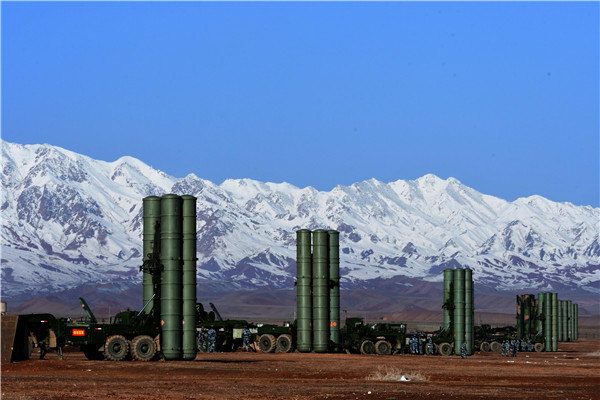
One thing that needs to be kept in mind is that the PLAGF does not command strategic air defense assets, which belong to the PLA Air Force (PLAAF). The S-400 systems would thus be with the PLAAF, as will most medium to long range AD assets. Besides the regular units, PLAAF has anti-cruise missile units equipped with vehicle-mounted chaff and decoy launching system; one of which is deployed in Tibet. The unit is attached to a regiment of the PLAAF under the WTC.

PLAGF Air Defence Exercises
Between 2006 to 2013, PLAGF exercises used to have participation of both divisions and brigades but in a major shift, PLAGF exercises were carried out only at brigade level from 2014 onwards and the scope was expanded to include artillery and AD brigades. Accordingly, artillery and air defense brigades were tested for the first time, in the series of 10 Firepower-2014 transregional exercises in 2014. The Firepower-2015 series involved seven AD brigades carrying out exercises in the Shandan training area.
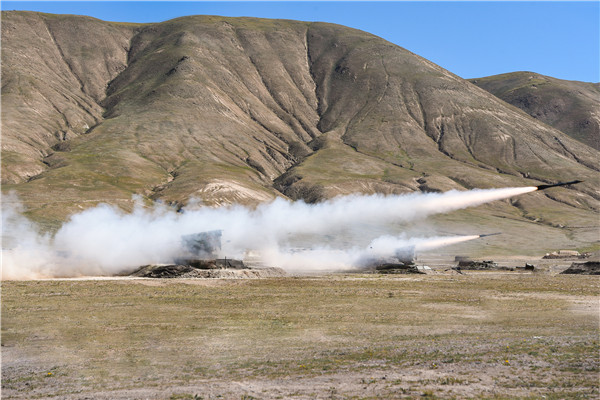
Going further, PLAGF organized the Stride and Firepower exercise series in 2016, which involved one infantry or armored brigade and one artillery and AD brigade from each of the five new theaters’ area of responsibility for a total of 15 exercises. Showing the growing importance of AD readiness in the PLAGF’s scheme of things, in 2017, one of the four exercises conducted by the PLAGF was the Firepower-2017 Shandan (air defense) exercise. It was carried out in northwest China’s Gansu Province on September 8, 2017. HQ-16 medium-range SAM systems attached to 79th AD Brigade of PLAGF’s 79th GA were one of the participants in this cross-Theatre Commands exercise organized to improve joint-ness and integrated AD missions by AD Brigades from other theatres.
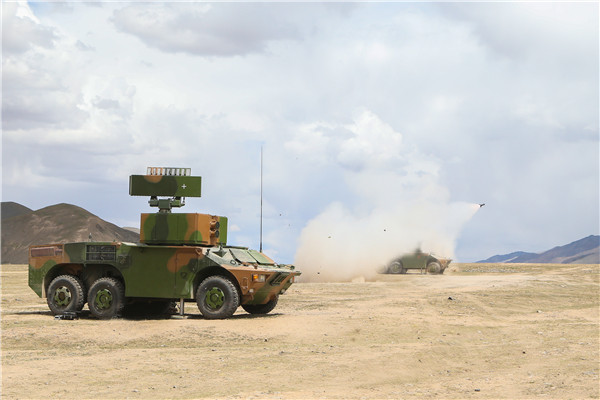
In November 2018, the 76th AD Brigade of 76th GA, WTC carried out an AD drill in the Gobi Desert. The units participating in the exercise included the standard PLAGF AD for corps-level manoeuvre units equipped with HQ-16 for area defence, HQ-7 short-range SAM for point defence and PG99 twin-35mm AAA guns for mechanised brigades. The PLAAF personnel were integrated into the PLAGF’s AD operations and command structure.

In late 2018, reports of a Digital Combat Unit appeared in the Chinese media that had carried out multiple missions on the Qinghai-Tibet Plateau during August of that year, including AD tasks. Though details of units and equipment were not provided, this was apparently to further the informatisation of air defence missions.
Mechanisation and Informationisation
The PLAGF reforms underway are quite ambitious in scope with the chief objectives being the achievement of basic mechanisation and making significant progress towards informationisation by 2020. This timeline was laid out in the 2008 Defence White Paper,and was reiterated in Chinese President Xi Jinping’s speech at the 19th Party Congress in 2017. Though what it implies was never publicly stated, it is broadly understood that mechanisation refers to the modernization of equipment inventories, whilst informationisation is the widespread adoption of digital systems in a networked environment.
In 2017, China claimed that its modernisation goals had been met and the PLAGF had already achieved mechanisation. However, the situation of the ground is not so rosy with large parts of the PLA still equipped with obsolescent equipment. Of the air defence systems, only about 4o per cent of equipment is modern with more than half of it being obsolescent. Given the challenges ahead, a more realistic assessment would be to expect at least 50 per cent of all PLAGF air-defence systems to be modern by 2020 thereby belying the goal of complete informationisation of its AD units by that year.
Be that as it may, the PLAGF does have a formidable AD capability and coupled with the strategic air defence provided by the PLAAF, China’s integrated AD system over Tibet cannot be taken lightly.
Colonel Mandeep Singh(Retd) joined the Indian Army in December 1982 and was commissioned into Air Defence Artillery. He commanded an Air Defence Group during Operation Parakaram and also commanded his Regiment along the Line of Actual Control with China. Besides Regimental service, he has experience in several Staff appointments. He has written extensively on various in-service subjects and contributed to technical journals.
© Delhi Defence Review. Reproducing this content in full without permission is prohibited.
































